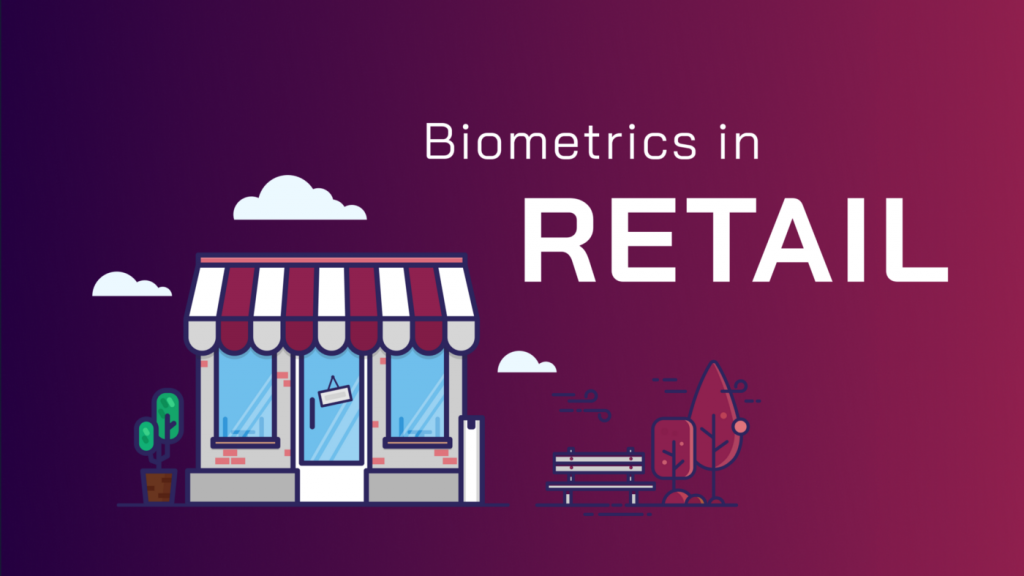How biometrics modifies retail and impacts customer service

The power of data in the retail context cannot be overemphasized. Such information on customers like purchase history, behavioral patterns in stores, their preferences, and the ways they move through stores enables retailers to adopt balanced decisions that improve customer loyalty and increase revenue.
The use of biometrics is gaining popularity in retail. Businesses implement the technology to identify customers providing them with personal communication during shopping. There are plenty of ways to employ the technology of customer identification in the retail industry, but this text is dedicated to facial biometrics as it becomes the most demanded among retailers and convenient for consumers. Read on to learn why to employ biometrics in retail, how does it impact customer service, and what are its benefits for businesses.
How does facial biometrics recognition work and what benefits are there for retailers & consumers?
It is the method of identification of people through some special features of their faces features like textures and shapes. That is possible due to artificial intelligence and special neural network algorithms. The camera captures a customer’s image, compares it with the database, and then identifies him. All you need is cameras and integrated software solution yet there are some requirements on hardware features that depends on every particular case.
Biometrics in retail tackles the following challenges:
- customer identification;
- counting visitors traffic;
- tracking consumers’ behavior and the ways they move through stores;
- the shopping histories;
- loyalty cards replacement;
- improving customer service and increasing engagement by providing them with personalized offers and discounts based on their preferences;
- cutting costs and automation;
- data collection and analysis.
All the aforementioned solutions can be successfully resolved with a scope of separate tools. But the competition between retailers has reached an impressive scale so to win it they have to invent new approaches and modernize & automatize current business solutions. Biometrics has become a safe and proven tool providing retailers with an easy win across improving customer services. It enables business to:
- cut expenses on the scope of marketing tools by replacing them;
- increase consumers’ engagement making them return so it increases revenue;
- make ads targeting more precise and effective that also leads to cutting expenses and increasing revenue;
- improve shelf spaces and plan procurement thoroughly on the basis of consumers behavior and preferences;
- reduce losses caused by shoplifters and prevent employees theft;
- enable business owners to control employees eliminating time and attendance fraud and making workforce management processes transparent at all stages;
- access the quality of service provided by employees;
- protect storage facilities and staff entrances from outsiders;
- reduce operational cost as it replaces all kinds of traditional keys, loyalty cards and passwords.
Notable cases of biometric facial recognition
It is always hard and risky to be a pioneer in implementing new technology. Fortunately, we do not have to learn on our own mistakes as gigantic players have already tried the technology for us and demonstrated its efficiency clearly. Here is a list of the companies that had already implied biometrics and not going to stop:
- A chain of luxury department stores Saks Fifth Avenue has been using facial recognition since 2016 to identify VIPs and capture shoplifters.
- Mastercard introduced selfie pay that enables customers to verify online payments by looking at their smartphone cameras.
- KFC China uses biometrics facial recognition to identify customers and predict their orders. The predictions are based on a customer’s gender, age, and mood.

- South Korea uses AI and facial recognition to help enterprises interview and hire people.
- South Korea also identifies people in front of kiosks to provide them with personalized, interactive advertisements for restaurants and stores.
- American airports use biometrics to screen passengers on international flights.
- The US government is using facial recognition technology to surveil Americans (here is an interesting article that covers how widespread the use of facial recognition technology has become in the US).
Using biometrics in retail is gaining momentum and going to replace the whole pool of marketing and security tools. Though some consumers concern about digital privacy and security. They fear that facial recognition will undermine privacy so preference will be given to the solutions like SVORT that do not store any sensitive data. Meantime both businesses and customers are getting ready for the technological renaissance in retail as shopping services and experience need constant improvement to remain competitive.